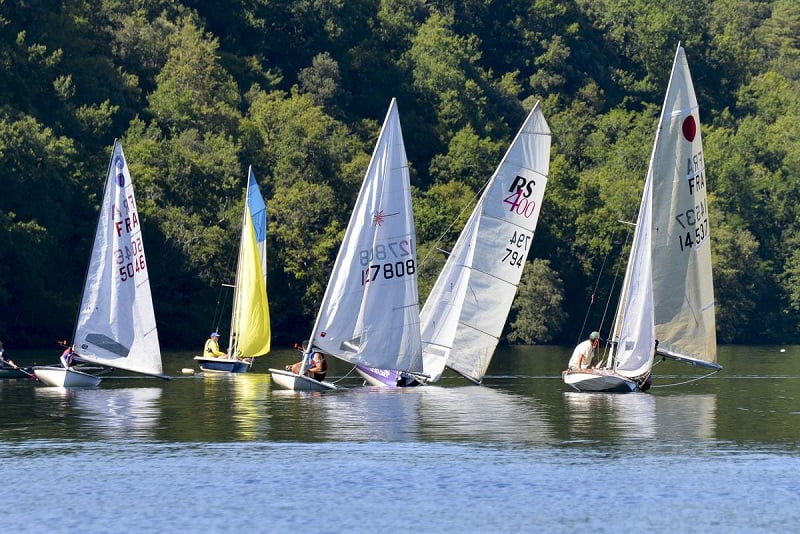Wooden boats called gabares
Once a bustling commercial axe for the valley, the river was the most direct and safest way of circulating goods. It also served to connect populations living higher up the river in Auvergne and Limousin with those lower down in Bergerac and Bordeaux.
Although the Dordogne’s river trade and use of gabares soared in the 18th and 19th centuries, these traditional flat-bottomed boats were operated as early as the Middle Ages. The boats would transport materials like wood and slate as well as salt and wine produced in nearby vineyards.
It would typically take around six days to descend the river between Argentat and Bordeaux , navigating through Beaulieu, Souillac, Beynac, Bergerac…and over two weeks to return upstream with animals (or men) often pulling the boats with ropes from the river banks.
On our estate you will find the old harbor of Lalinde next to the renovated warehouse. Here, about 200 days a year, cargo was unloaded by Gabarres.
During the rest of the year the Dordogne was unnavigable because of the many rapids and the low water level. During this time, the Lalinde canal was used. You will find this canal across the road from Les Magnolias.
A refreshing dip
What could be more refreshing than slipping into the cool, clear waters of the Dordogne river on a hot summer’s day? The beauty of the region’s natural beaches and swimming opportunities always make for the perfect afternoon.
The river is one of the cleanest in Europe and offers reliably warm water especially in July and August. Much as a dip in the pool is nice and refreshing, nothing beats a swim in the sparkling waters of the Dordogne.
There are several beaches along the Dordogne River, the one at Limeuil being of particular note. You will find this beach only 15 minutes away bij car from Les Magnolias.
Limeuil is regarded one of the “most beautiful village in France.” Laying at the confluence of the Vezere and Dordogne Rivers, Limeuil is home to a fantastic sandy river beach. Being shallow at the edge, the beach is a great choice for families with young children.If you can manage to drag yourself away from this beautiful beach, wandering around the cobbled streets of this postcard-perfect village, past honey-coloured houses and perfectly-manicured gardens, is definitely worth its while.
Situated in Le Buisson de Cadouin ,The Plage du Pont de Vicq is a popular river beach that offers enjoyable swims in the Dordogne as well as fabulous marked trails through the Bessède Forest.
A café for refreshments is available however bathing is unsupervised.
You are also welcome to swim in the river at Les Magnolias, the water is clean and refreshing. It is wise to put on water shoes(chaussures aquatiques). These are available at the supermarket across the street.
Spoilt for choice
Although the river is navigable along the last 112 miles of its course, commercial traffic on the Dordogne is light which makes it a great place to practice water sports.
Canoeing and kayaking the river is the best way to admire the region’s fairy-tale like countryside and some of the quieter sections of the river that are otherwise inaccessible. Stock up with some local specialities and stop off for a picnic along the banks of the river. We can heartily recommend canoe-roquegeoffre, here you can make a reservation in English. The route we can recommend is from La Roque Gageac 14 km(3 hours).
A new funny way to explore the Dordogne river is stand up paddle. You will find this in nearby Creysse.(10 km)
The Conseil Général de la Dordogne has created dedicated leisure areas , all of which can be used for free by the general public. The nearby Trémolat aquatic centre on the banks of the Dordogne is on of them. This center offers waterskiing.
In the adjacent village of Mauzac( 5 km) is a nautical club: here you can sail on the Dordogne. Walk by and ask what it costs to rent a boat. You can also make a boat trip from there with a Gabarre.
On our domain you can enjoy the river yourself. You will find a hike route along the riverbanks ,you can use our canoes. You may also fish directly from our riverboards for barbel, carp, chub, pikeperch, catfish and various other fish species.






